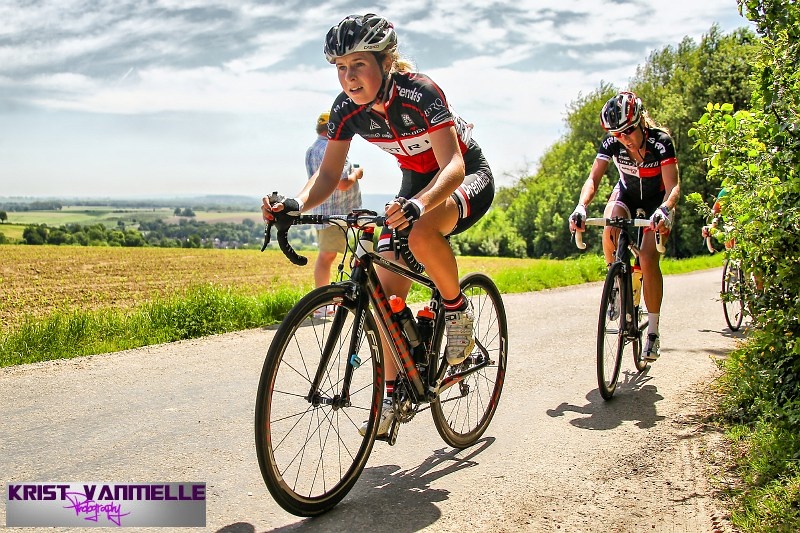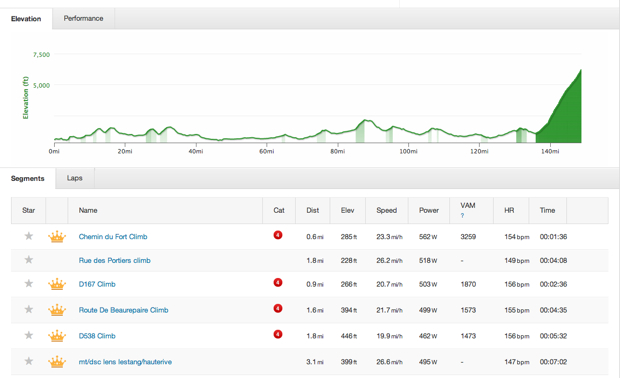At the end of last week I took my team to Holland to race the in UCI 1.2 ranked event, the Valkenburg Hills Classic. Run in the same region as the upcoming World Road Race Championships and taking in many of the hills used in the Amstel Gold race, it was never going to be an easy event. With Marianne Vos at the head of affairs, with her powerful Rabo team riding off against the AA Drinks team of Emma Pooley and several other Brits hunting for points towards Olympic selection, the pace was very high. For us as an aspiring team looking for further backing to make the step to the next level, you have to start somewhere and this race fitted with our race schedule and allowed us to dip our toes into pro racing, while keeping the distance of the event below 100kms.
I’ve been going to Pro events with teams for eight years and the team is in a new phase of development now, which has made me seriously consider where the sport is in terms of the graded steps needed to get riders up to World Cup level. My team has an average age of 19, and there aren’t too many riders that can be at the very top at that age. There are some who are seen as super-talented freaks of nature and we all dream of having an ounce of their talent. There are others that hit the top early and also leave the sport early, or leave their best years behind them far too soon. In the UK now we have a fantastic crop of young riders, but what is in store for them? If you look at men’s racing (or ‘proper’ racing as I recently heard it called), races are ranked in a very similar way: .2, .1, PT in ascending order. For the women you simply replace Pro Tour with World Cup and the structure is the same. The main difference is Rabobank don’t send their ProTour team to the .2 ranked events. These events are for conti teams and developing teams to make the stepping stone to the higher level. It’s also a chance for continental riders to show their talent against a level playing field. But it seems these chances have been taken away from women’s cycling. This leads us to two issues. Firstly, a lack of racing on the UCI calendar pushes ‘big’ teams to go to a lot of ‘small’ events. Big-budgeted teams have a lot of riders on the roster, meaning that to satisfy the racing requirements of all riders are taking part in most of the UCI races a reasonable distance from their team base. So the obvious fix is more races, but I’m personally not a fan of ‘forcing’ men’s races to hold a women’s event. There are obvious benefits where a men’s race chooses to do so, but forcing the issue leaves women’s cycling with an unmotivated set of organisers who do not promote the event to the level needed. I’d be more of a fan of completely changing the UCI race registration process for the women’s racing. Why shoehorn women’s racing into men’s rules? The sports aren’t the same at this point in time and this needs to be reflected in the rules. These changes could be the catalyst to the sports getting closer and eventually both running under the same or similar rules and regulations in the future. The lowest level of UCI races need to be accessible, affordable to organisers, and a place where young or new talent can thrive. Not a place to take part, get demoralised, and a forum for people to leave the sport. The second issue is the fact that I’m not aware of a women’s professional team with a true feeder team or junior team (as per Rabobank in men’s cycling, for example), and the teams I have spoken to at the top of women’s cycling have dismissed the idea as “ahead of its time.” If the top teams had feeder teams for their young and developing riders, targeting lower races but with the full professional structure and expectations, it would allow the ‘top’ team to reduce its rider roster. It would therefore have the benefit of allowing the full team to target the highest-ranked events, and approach each race in a more professional manner. The final part of this (for now) is the need for better coordination of the race program. Just last week, while my team were at a .2 race in Holland racing against Vos, there were also UCI races on in the USA with a small field and a race in South Africa with an equally small field. I’m all for the globalisation of the sport, but with a little planning we could actually do it in a way to ensure the sport moves forward, rather than moving in three directions at once. We have huge gaps in the calendar and it isn’t hard to see that with better coordination we could help balance the races throughout the season. The reality of the step up from amateur racing, like for my team, is that it can’t be made overnight. The jump to professional races – particularly in Northern Europe – is huge, and I believe this is also causing the regionalisation of professional teams at exactly the same time as the sport is meant to be globalising. Italian teams, of which there are always a huge number, travel far less and seem to be developing their own scene in Italy. This doesn’t harm their World Championship ambition, but does ensure the top riders aren’t always meeting at events. Should we have the good fortune to extend our sponsorship partnerships for next season, or attract additional partners, I know we have plans to do our bit with the formation of a junior squad and the promotion of a race event. We aim to raise the bar and every year set it higher. I hope others – including teams, organisers and the UCI – can do the same and we can create the right place for this new batch of riders to reach their potential.















2 Comments
A very interesting and considered analysis. I wholeheartedly agree and wish you all the best in your continued endeavours to develop young British cycling talent.
[…] Wyman recently wrote an interesting piece about the difficulties facing top national riders hoping to develop on the international scene. The interviews with the girls before the race highlighted some of difficulties we all face. […]